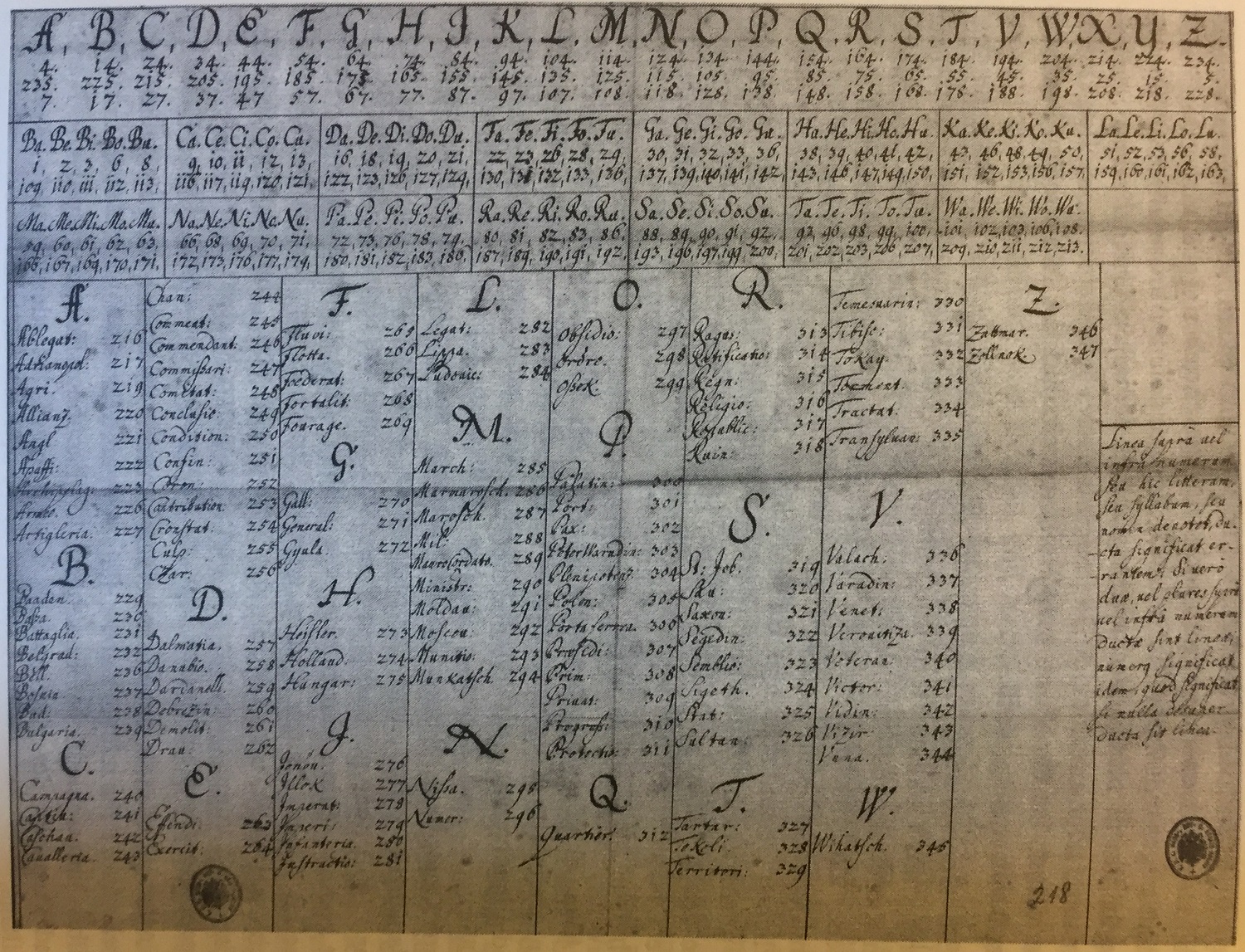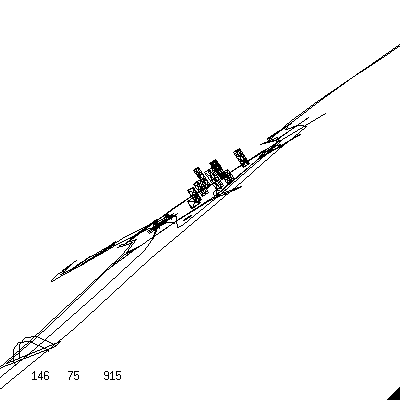|
ROT13
ROT13 is a simple letter substitution cipher that replaces a letter with the 13th letter after it in the Latin alphabet. ROT13 is a special case of the Caesar cipher which was developed in ancient Rome, used by Julius Caesar in the 1st century BC. An early entry on the Timeline of cryptography. ROT13 can be referred by "Rotate13", "rotate by 13 places", hyphenated "ROT-13" or sometimes by its Autological word, autonym "EBG13". Description Applying ROT13 to a piece of text requires examining its alphabetic characters and replacing each one by the letter 13 places further along in the alphabet, wrapping back to the beginning as necessary. When encoding a message, A becomes N, B becomes O, and so on up to M, which becomes Z. Then the sequence continues at the beginning of the alphabet: N becomes A, O becomes B, and so on to Z, which becomes M. When decoding a message, the same substitution rules are applied, but this time on the ROT13 encrypted text. Other characters, such as ... [...More Info...] [...Related Items...] OR: [Wikipedia] [Google] [Baidu] [Amazon] |
Substitution Cipher
In cryptography, a substitution cipher is a method of encrypting in which units of plaintext are replaced with the ciphertext, in a defined manner, with the help of a key; the "units" may be single letters (the most common), pairs of letters, triplets of letters, mixtures of the above, and so forth. The receiver deciphers the text by performing the inverse substitution process to extract the original message. Substitution ciphers can be compared with transposition ciphers. In a transposition cipher, the units of the plaintext are rearranged in a different and usually quite complex order, but the units themselves are left unchanged. By contrast, in a substitution cipher, the units of the plaintext are retained in the same sequence in the ciphertext, but the units themselves are altered. There are a number of different types of substitution cipher. If the cipher operates on single letters, it is termed a simple substitution cipher; a cipher that operates on larger groups of lett ... [...More Info...] [...Related Items...] OR: [Wikipedia] [Google] [Baidu] [Amazon] |
Involution (mathematics)
In mathematics, an involution, involutory function, or self-inverse function is a function that is its own inverse, : for all in the domain of . Equivalently, applying twice produces the original value. General properties Any involution is a bijection. The identity map is a trivial example of an involution. Examples of nontrivial involutions include negation (), reciprocation (), and complex conjugation () in arithmetic; reflection, half-turn rotation, and circle inversion in geometry; complementation in set theory; and reciprocal ciphers such as the ROT13 transformation and the Beaufort polyalphabetic cipher. The composition of two involutions and is an involution if and only if they commute: . Involutions on finite sets The number of involutions, including the identity involution, on a set with elements is given by a recurrence relation found by Heinrich August Rothe in 1800: : a_0 = a_1 = 1 and a_n = a_ + (n - 1)a_ for n > 1. The first few terms of ... [...More Info...] [...Related Items...] OR: [Wikipedia] [Google] [Baidu] [Amazon] |
Caesar Cipher
In cryptography, a Caesar cipher, also known as Caesar's cipher, the shift cipher, Caesar's code, or Caesar shift, is one of the simplest and most widely known encryption techniques. It is a type of substitution cipher in which each letter in the plaintext is replaced by a letter some fixed number of positions down the alphabet. For example, with a left shift of 3, would be replaced by , would become , and so on. The method is named after Julius Caesar, who used it in his private correspondence. The encryption step performed by a Caesar cipher is often incorporated as part of more complex schemes, such as the Vigenère cipher, and still has modern application in the ROT13 system. As with all single-alphabet substitution ciphers, the Caesar cipher is easily broken and in modern practice offers essentially no communications security. Example The transformation can be represented by aligning two alphabets; the cipher is the plain alphabet rotated left or right by some number of ... [...More Info...] [...Related Items...] OR: [Wikipedia] [Google] [Baidu] [Amazon] |
Reciprocal Cipher
Symmetric-key algorithms are algorithms for cryptography that use the same cryptographic keys for both the encryption of plaintext and the decryption of ciphertext. The keys may be identical, or there may be a simple transformation to go between the two keys. The keys, in practice, represent a shared secret between two or more parties that can be used to maintain a private information link. The requirement that both parties have access to the secret key is one of the main drawbacks of symmetric-key encryption, in comparison to public-key encryption (also known as asymmetric-key encryption). However, symmetric-key encryption algorithms are usually better for bulk encryption. With exception of the one-time pad they have a smaller key size, which means less storage space and faster transmission. Due to this, asymmetric-key encryption is often used to exchange the secret key for symmetric-key encryption. Types Symmetric-key encryption can use either stream ciphers or block cip ... [...More Info...] [...Related Items...] OR: [Wikipedia] [Google] [Baidu] [Amazon] |
Spoiler (media)
A spoiler is an element of a disseminated summary or description of a media narrative that reveals significant plot elements, with the implication that the experience of discovering the plot naturally, as the creator intended it, has been robbed ("spoiled") of its full effect. Typically, the conclusion of a plot, including the climax and ending, is regarded as highly susceptible to spoilers. Plot twists are also prone to spoilers. Any narrative medium can produce spoilers, although they are usually associated with movies and television shows. Some people attempt to avoid being "spoiled" while others seek out spoilers to learn as much as possible about a narrative before experiencing it. Spoilers have become more common in the present day with the rise of social media, which provides an outlet for people to spread spoilers. There are three types of spoilers: short spoilers, long spoilers, and thematic spoilers. Short spoilers reveal the plot ending in a very brief and less detai ... [...More Info...] [...Related Items...] OR: [Wikipedia] [Google] [Baidu] [Amazon] |
Netscape Communicator
Netscape Communicator (or ''Netscape 4'') is a discontinued Internet suite produced by Netscape Communications Corporation, and was the fourth major release in the Netscape line of browsers. It was first in beta in 1996 and was released in June 1997. Netscape Communicator addressed the problem of Netscape Navigator 3.x being used as both the name of the suite and the browser contained within it by renaming the suite to Netscape ''Communicator''. It included more groupware features intended to appeal to enterprises. In February 1998, Netscape announced that Mozilla.org would co-ordinate the development of Netscape Communicator 5 as "a dedicated team within Netscape with an associated Web site that will promote, foster and guide open dialog and development of Netscape's client source code." However, the aging Communicator code proved to be difficult to work with, so it was abandoned. The whole source code of Communicator was re-written by Mozilla, who were then testing it as M ... [...More Info...] [...Related Items...] OR: [Wikipedia] [Google] [Baidu] [Amazon] |
IOCCC
The International Obfuscated C Code Contest (abbreviated IOCCC) is a computer programming contest for code written in C that is the most creatively obfuscated. Held semi-annually, it is described as "celebrating 'ssyntactical opaqueness". The winning code for the 27th contest, held in 2020, was released in July 2020. Previous contests were held in the years 1984–1996, 1998, 2000, 2001, 2004–2006, 2011–2015 and 2018–2020. Entries are evaluated anonymously by a panel of judges. The judging process is documented in the competition guidelines and consists of elimination rounds. By tradition, no information is given about the total number of entries for each competition. Winning entries are awarded with a category, such as "Worst Abuse of the C preprocessor" or "Most Erratic Behavior", and then announced on the official IOCCC website. The contest states that being announced on the IOCCC website is the reward for winning. History The IOCCC was started by Landon Curt Noll and ... [...More Info...] [...Related Items...] OR: [Wikipedia] [Google] [Baidu] [Amazon] |
Compiler
In computing, a compiler is a computer program that Translator (computing), translates computer code written in one programming language (the ''source'' language) into another language (the ''target'' language). The name "compiler" is primarily used for programs that translate source code from a high-level programming language to a lower level language, low-level programming language (e.g. assembly language, object code, or machine code) to create an executable program.Compilers: Principles, Techniques, and Tools by Alfred V. Aho, Ravi Sethi, Jeffrey D. Ullman - Second Edition, 2007 There are many different types of compilers which produce output in different useful forms. A ''cross-compiler'' produces code for a different Central processing unit, CPU or operating system than the one on which the cross-compiler itself runs. A ''bootstrap compiler'' is often a temporary compiler, used for compiling a more permanent or better optimised compiler for a language. Related software ... [...More Info...] [...Related Items...] OR: [Wikipedia] [Google] [Baidu] [Amazon] |
Computer Program
A computer program is a sequence or set of instructions in a programming language for a computer to Execution (computing), execute. It is one component of software, which also includes software documentation, documentation and other intangible components. A ''computer program'' in its human-readable form is called source code. Source code needs another computer program to Execution (computing), execute because computers can only execute their native machine instructions. Therefore, source code may be Translator (computing), translated to machine instructions using a compiler written for the language. (Assembly language programs are translated using an Assembler (computing), assembler.) The resulting file is called an executable. Alternatively, source code may execute within an interpreter (computing), interpreter written for the language. If the executable is requested for execution, then the operating system Loader (computing), loads it into Random-access memory, memory and ... [...More Info...] [...Related Items...] OR: [Wikipedia] [Google] [Baidu] [Amazon] |
String-searching Algorithm
A string-searching algorithm, sometimes called string-matching algorithm, is an algorithm that searches a body of text for portions that match by pattern. A basic example of string searching is when the pattern and the searched text are arrays of elements of an alphabet (finite set) Σ. Σ may be a human language alphabet, for example, the letters ''A'' through ''Z'' and other applications may use a ''binary alphabet'' (Σ = ) or a ''DNA alphabet'' (Σ = ) in bioinformatics. In practice, the method of feasible string-search algorithm may be affected by the string encoding. In particular, if a variable-width encoding is in use, then it may be slower to find the ''N''th character, perhaps requiring time proportional to ''N''. This may significantly slow some search algorithms. One of many possible solutions is to search for the sequence of code units instead, but doing so may produce false matches unless the encoding is specifically designed to avoid it. Overview The most basic ... [...More Info...] [...Related Items...] OR: [Wikipedia] [Google] [Baidu] [Amazon] |



